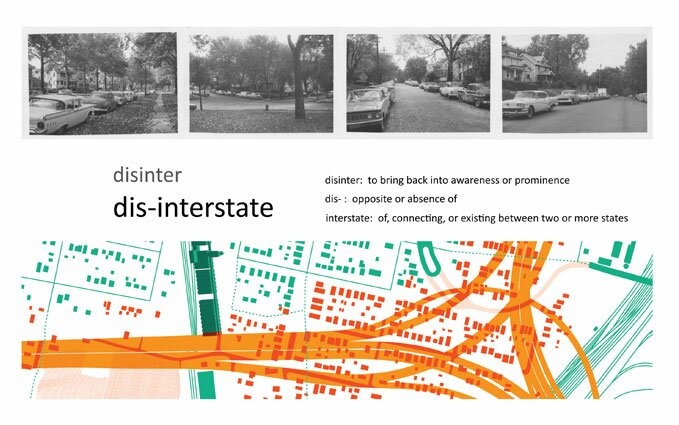Elevation Station Preview: Grant Landreth + Chris Jansen + Chef, Adam Graybill
May 25th, 2012 : : Kayla : :
Remnants of Omaha neighborhoods affected by the construction of the interstate during the late 1950s and 1960s likely go unnoticed by most during daily commutes: fragmented neighborhoods, streets ending at either side but don’t cross the interstate, buildings that face the interstate (that originally faced other buildings) and grain silos removed from the larger silo complex near 34th and Vinton Streets. With the passing of time we forget these changes and others were not yet alive when they occurred. What was removed is difficult to visualize; the neighborhoods that once stood where the interstate now exists and the people and businesses that inhabited them.
Focusing on a small area where the interstate stands today (Vinton Street to the north, A Street to the south, the railroad tracks to the east and 36th Street to the west), a city directory research yielded 163 listings (addresses and names of families and businesses) which no longer exist. This area of Omaha contained several cultures, but was predominantly Polish and German. The buildings removed were more than the materials they were constructed of, they were where decades (at least 50 years or more)  of memories and connections were made: friendships, new loves, old loves, marriages, births, deaths and were many immigrants starting new lives made their home. Many of these memories were formulated as friends and families gathered around the dining room table.
of memories and connections were made: friendships, new loves, old loves, marriages, births, deaths and were many immigrants starting new lives made their home. Many of these memories were formulated as friends and families gathered around the dining room table.
Disinter/Interstate seeks to create awareness of the connections that existed before the interstate. Participants will cross over a threshold of found building materials filled with remnants of the past. Food, prepared by Adam Graybill of Nebraska Brewing Company, will be a 10 hour smoked pork butt atop a 3 cabbage slaw – an elevated take on a dish those in the neighborhood 50 years ago would certainly recognize and thoroughly enjoy. A 20+ foot dining table comprised of varying table tops will be marked with all 163 names and addresses of each family and business near the dining location and will contain within it items that evoke memories of the past. Postcards will be created for event participants to mail to the address of their choosing – or an address that no longer exists – a reminder of the neighborhoods that shaped our city and how transportation decisions impacted them.

